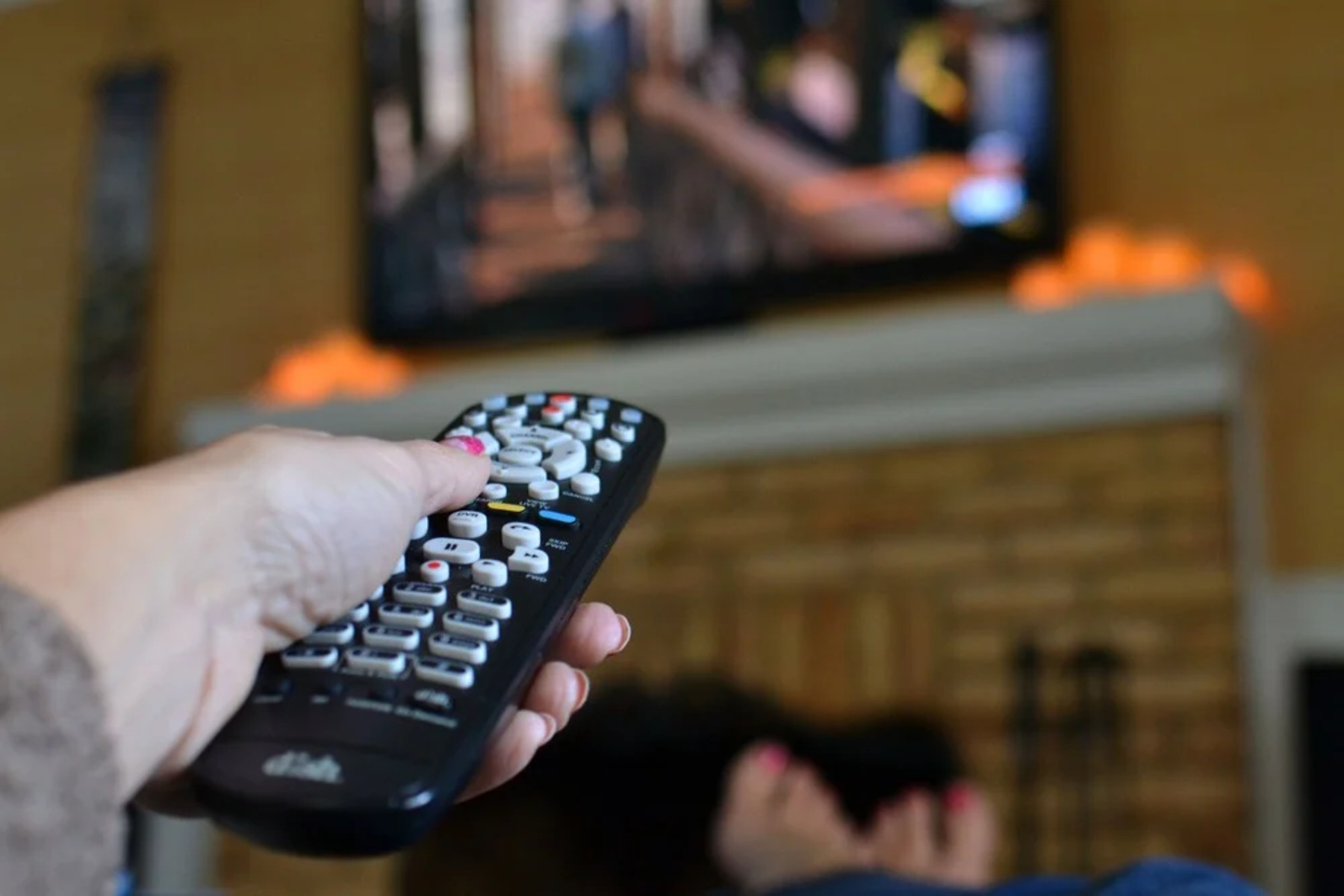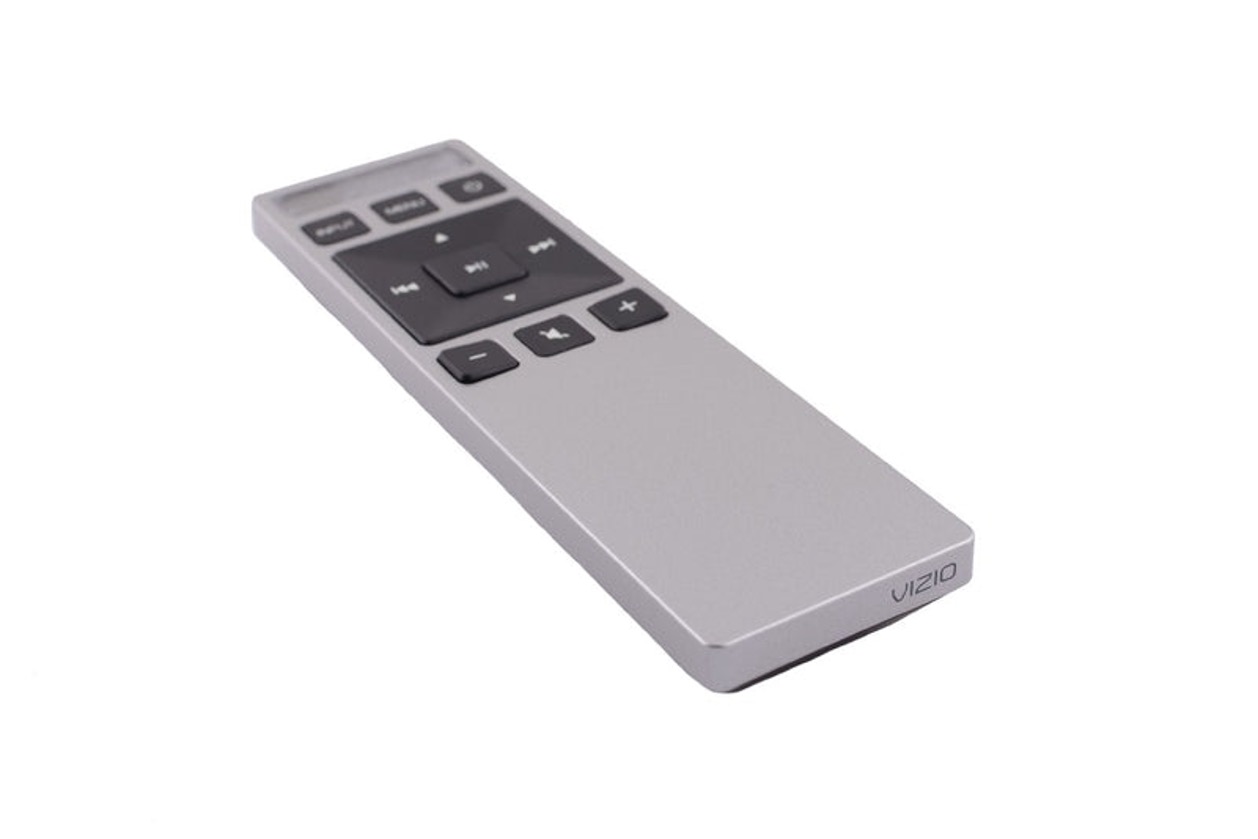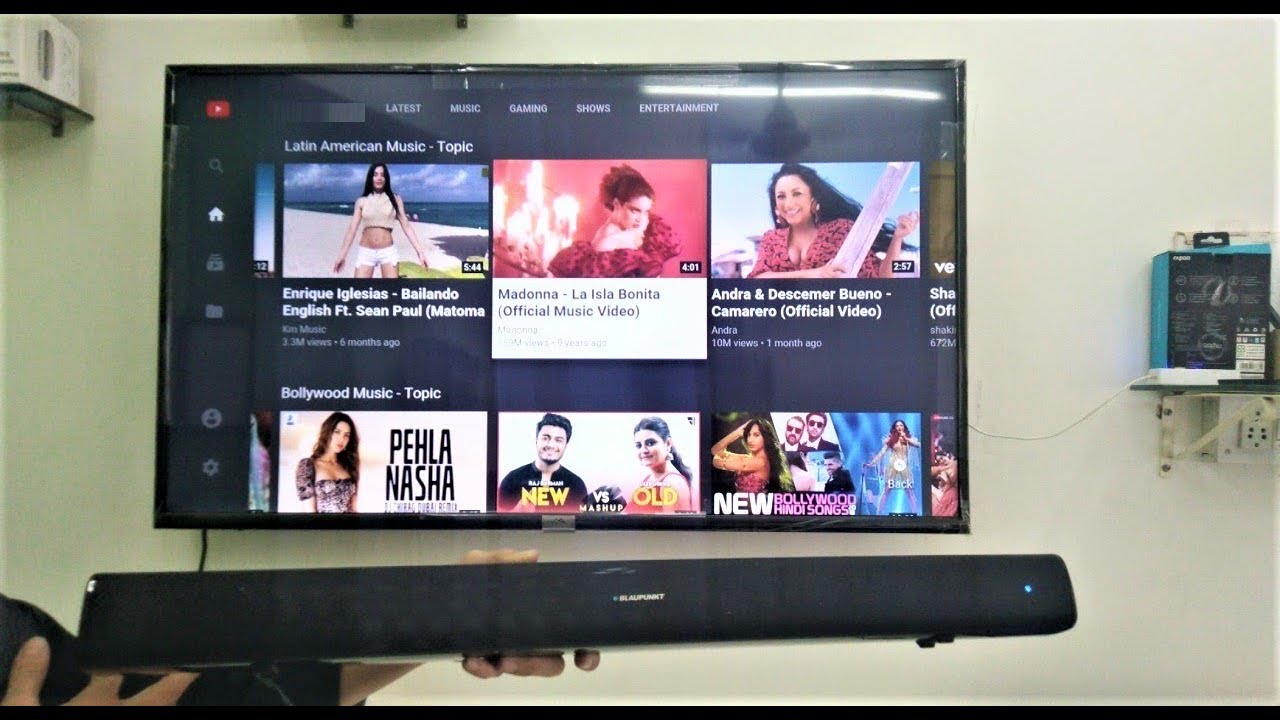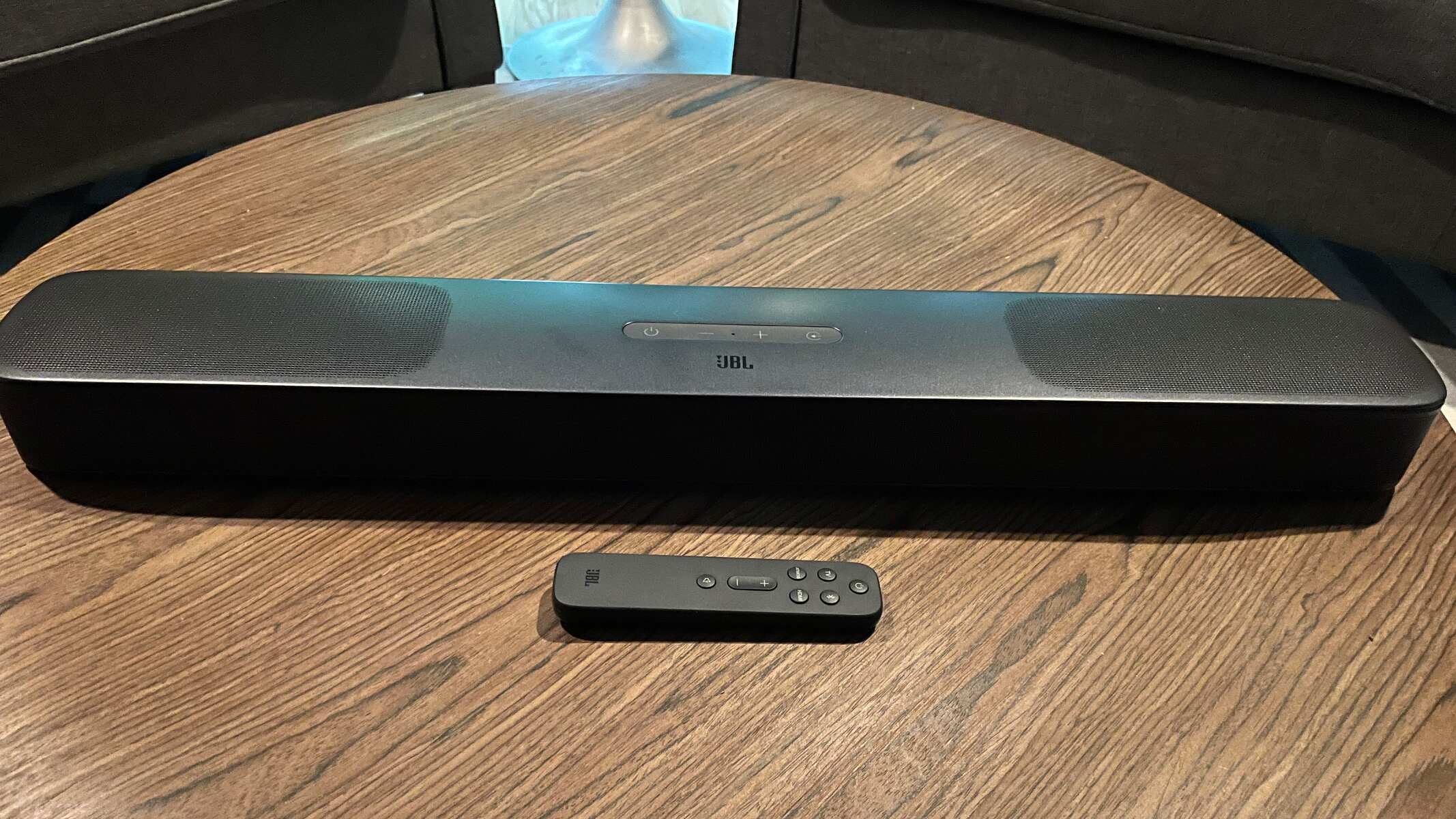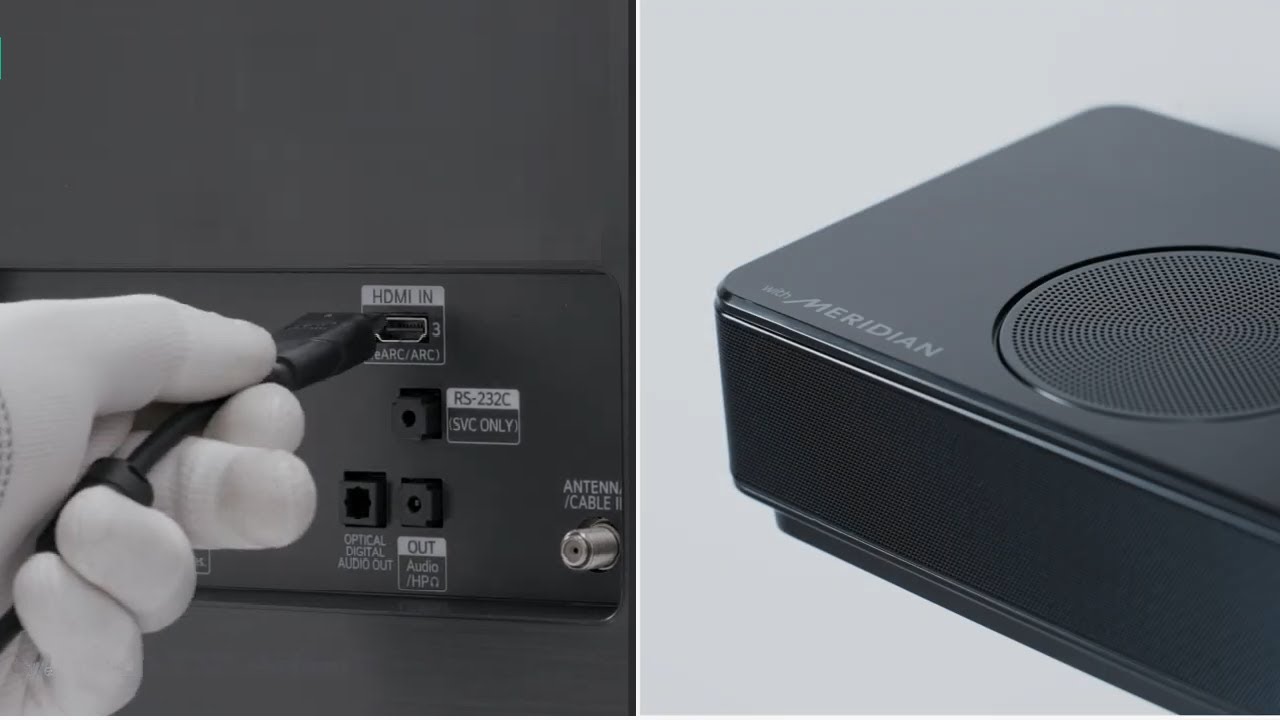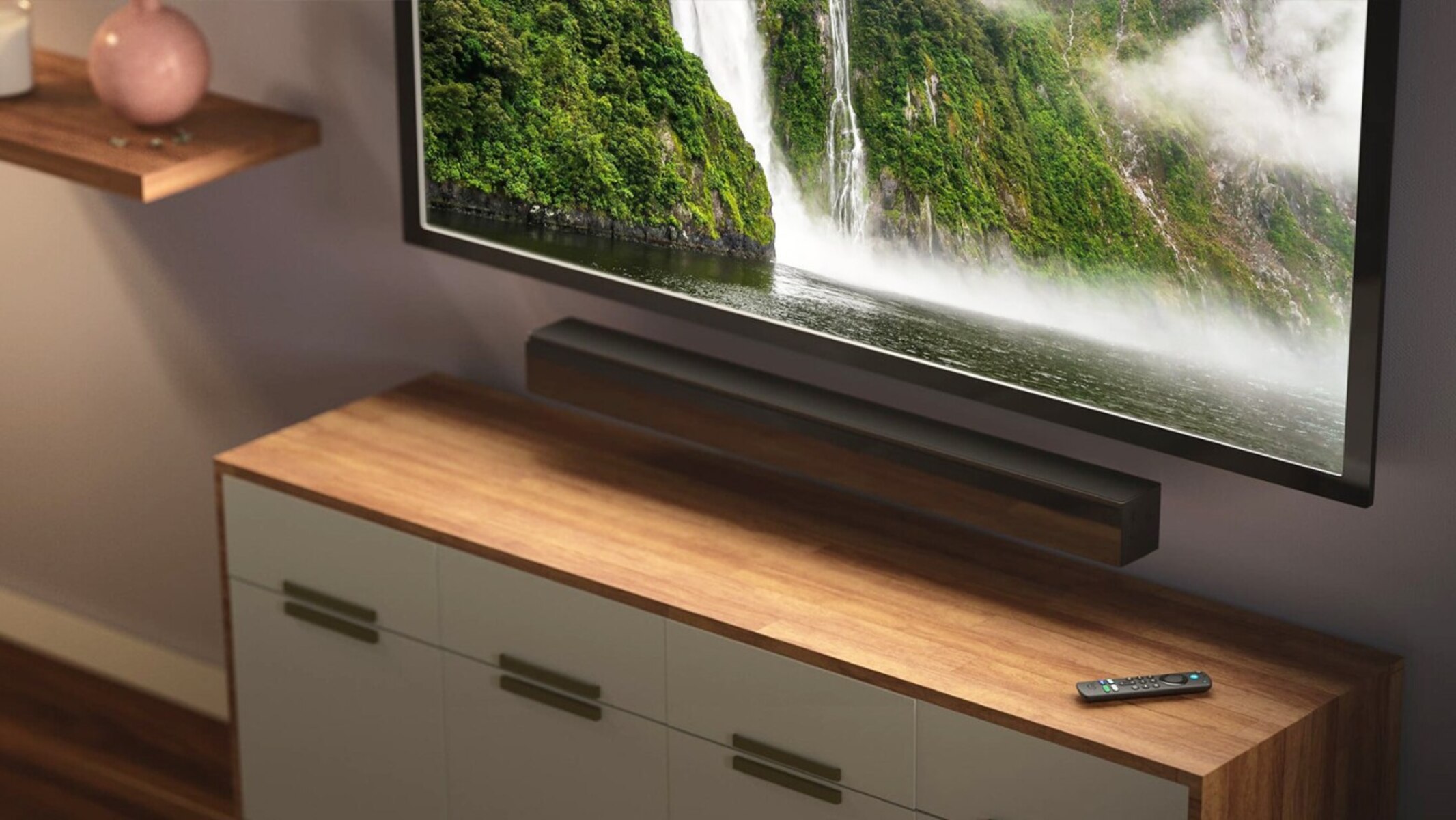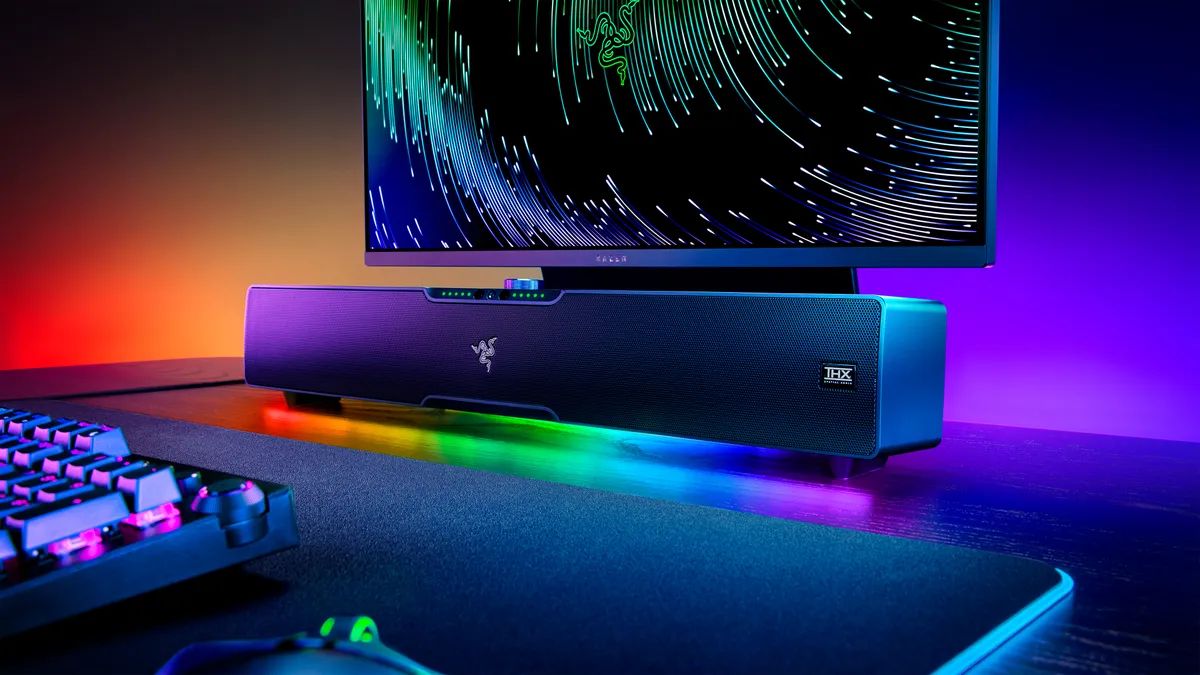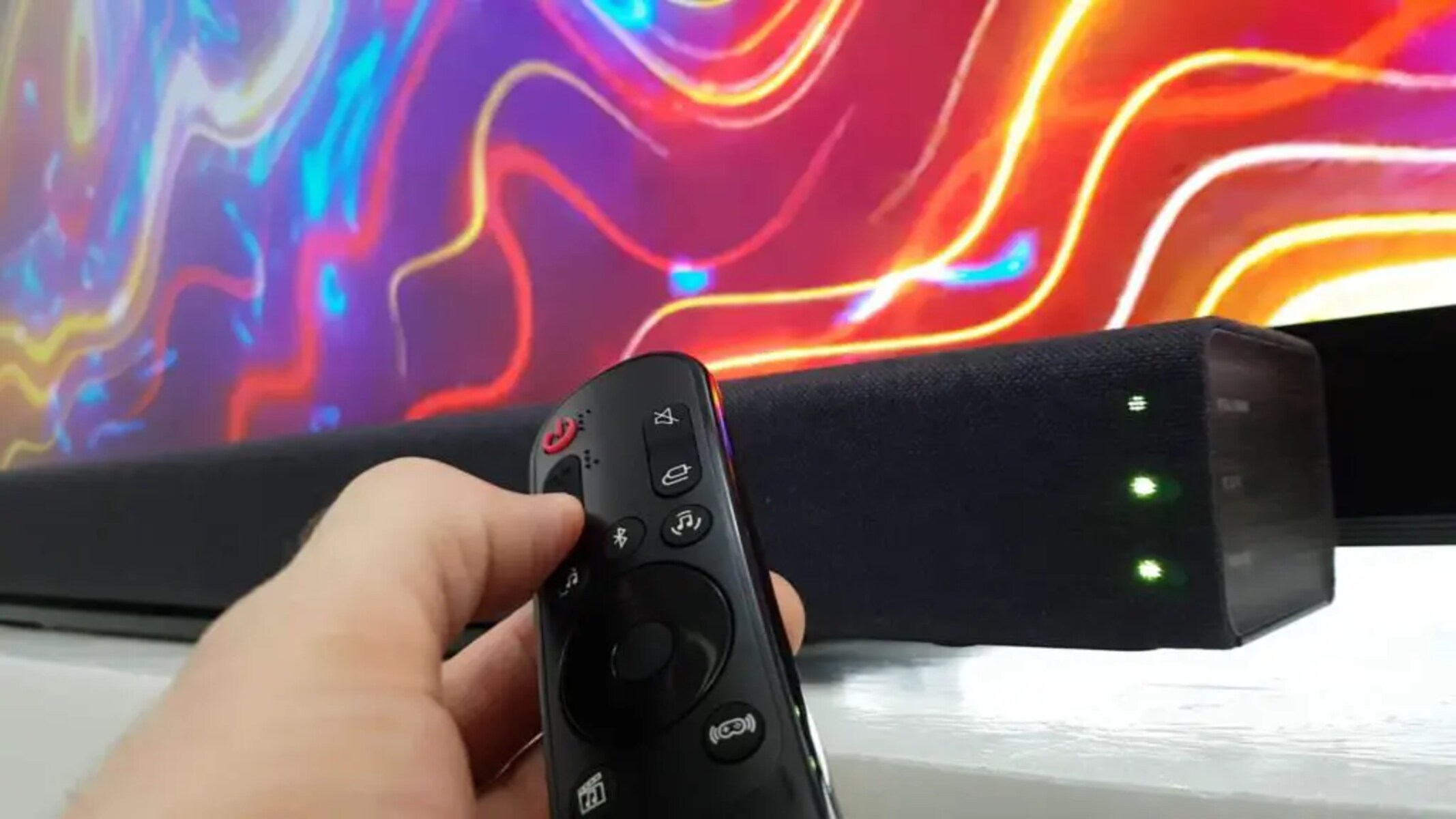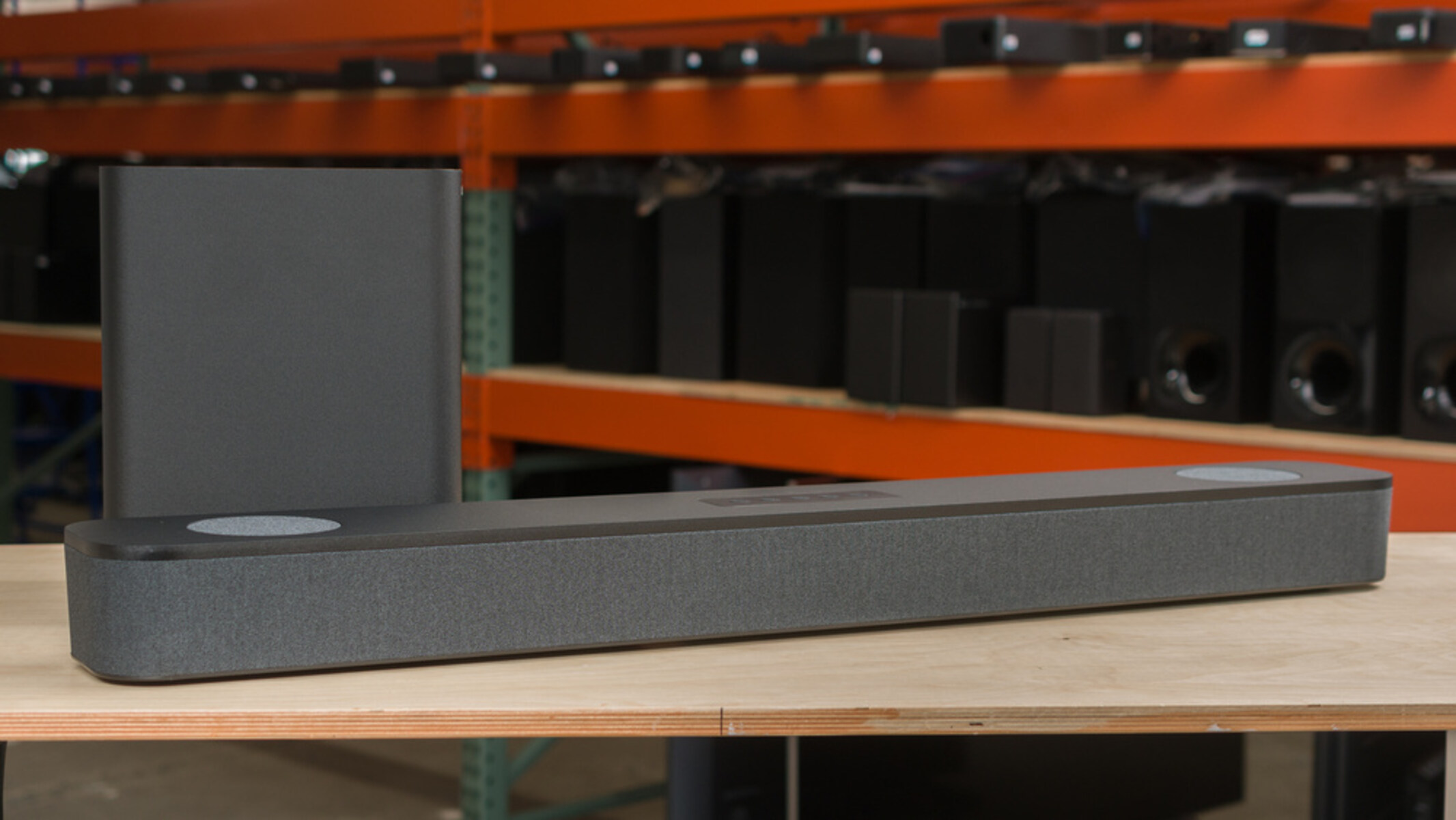Introduction
Having separate remotes for your TV and soundbar can be quite inconvenient. It’s easy to misplace one or forget which one controls what. Luckily, you can simplify your entertainment setup by programming your TV remote to control your soundbar. This allows you to adjust the volume and other settings without having to juggle multiple remotes.
However, getting your TV remote to control your soundbar is not always a straightforward process. It depends on several factors, such as the compatibility of your devices and the programming options available on your TV. In this article, we will explore the steps you can take to successfully sync your TV remote with your soundbar.
Before we delve into the specifics, it’s important to understand the basics of how this process works. Most modern TVs and soundbars communicate via infrared (IR) signals. The TV remote emits these signals, which the soundbar receives and interprets as commands. By programming the TV remote to send the correct IR signals, you can control the soundbar’s functions seamlessly.
However, it’s worth noting that not all soundbars are compatible with the programming capabilities of TV remotes. It depends on the brand, model, and features of both your TV and soundbar. Therefore, it’s important to check for compatibility before attempting to program your TV remote.
In the following sections, we will guide you through the steps to check for compatibility, program your TV remote properly, and troubleshoot any common issues that may arise. We will also explore alternative solutions if programming your TV remote is not feasible. So, let’s get started and simplify your entertainment experience by getting your TV remote to control your soundbar!
Understanding the Basics
Before you begin the process of programming your TV remote to control your soundbar, it’s important to have a clear understanding of the basics. This will help you navigate through the steps more effectively and troubleshoot any potential issues that may arise.
In most cases, TVs and soundbars communicate using infrared (IR) signals. The TV remote sends out these signals, and the soundbar receives and interprets them as commands. This allows you to control the volume, power, and other functions of the soundbar using the TV remote.
When programming your TV remote, you need to ensure that it is sending the correct IR signals that your soundbar can understand. This requires matching the remote’s codes with the codes recognized by the soundbar. Different brands and models use different sets of IR codes, so it’s essential to find the right combination.
It’s also important to note that not all TV remotes have the capability to control external devices like soundbars. Some remotes may have limited control options or may not have the programming feature at all. Refer to your TV’s user manual or contact the manufacturer to determine if your remote has this functionality.
Furthermore, some soundbars have their own remote control codes, which you can manually input into your TV remote. This allows you to control the soundbar directly without the need for further programming. However, not all models offer this option, so it’s crucial to check your soundbar’s manual or website for specific instructions.
Additionally, keep in mind that programming your TV remote to control a soundbar may not provide complete functionality. While you can adjust the volume and power on/off, some advanced features like switching sound modes or controlling EQ settings may not be accessible through the TV remote.
Understanding these basics will make the process of programming your TV remote to control your soundbar much smoother. In the next section, we will discuss how to check for compatibility between your TV and soundbar, ensuring a successful remote programming experience.
Checking for Compatibility
Before you proceed with programming your TV remote to control your soundbar, it’s crucial to check for compatibility between the two devices. Not all soundbars are designed to work with TV remotes, so it’s important to ensure that your soundbar has this capability.
The first step is to consult the user manual of your soundbar. Look for any instructions or information regarding remote control compatibility. It should clearly state whether or not the soundbar can be controlled by a TV remote. If this information is not provided in the manual, visit the manufacturer’s website or reach out to their customer support for clarification.
Another way to verify compatibility is by checking the specifications of your soundbar. Look for any mentions of “remote control compatibility” or “TV remote functionality.” Some soundbars are specifically marketed as being compatible with TV remotes. In that case, you can proceed with confidence knowing that your soundbar is designed to work seamlessly with your TV remote.
If you still can’t find any information about compatibility, there is one more useful method to check. Turn on both your TV and soundbar and then aim your TV remote directly at the soundbar. Press the volume up or down button on your TV remote and observe if the soundbar’s volume changes. If it does, it’s a good indication that the two devices are compatible, and you can proceed with programming the remote.
However, if the soundbar’s volume doesn’t respond to the TV remote’s commands, it’s likely that they are not compatible. In such cases, you may need to explore alternative solutions, such as purchasing a universal remote that is specifically designed to control multiple devices or using the soundbar’s dedicated remote.
Remember, checking for compatibility is a crucial step before attempting to program your TV remote. This will save you from wasting time and effort on a process that may not yield the desired results. In the next section, we will discuss how to program your TV remote to control your soundbar successfully.
Programming the TV Remote to Control the Soundbar
Once you have verified that your TV and soundbar are compatible, you can proceed with the process of programming your TV remote to control the soundbar. The specific steps may vary depending on your TV brand and model, but generally, the following guidelines will help you get started:
- Locate the “Settings” or “Menu” button on your TV remote. It is usually represented by a gear icon or labeled as “Setup.”
- Navigate to the “Audio” or “Sound” settings menu using the arrow buttons on your TV remote.
- Look for an option like “Speaker” or “Sound Output” in the settings menu. This option allows you to select the audio output device for your TV.
- Select the option that corresponds to your soundbar. It may be labeled as “External Speakers,” “Soundbar,” or the specific brand/model of your soundbar.
- Once you have selected the soundbar as the audio output device, save the settings and exit the menu.
- Test the control by using the volume up/down button on your TV remote. If the soundbar’s volume responds to the TV remote commands, then the programming was successful.
If the above steps do not work or if your TV does not have the option to select an external audio device, you might need to consult your TV’s user manual or contact the manufacturer’s customer support for specific instructions on programming the remote. Some TVs require a more advanced setup process, such as entering specific codes or using a separate programming mode.
It’s also worth mentioning that some universal remotes have an automatic code search feature that can help you find the correct programming codes for your soundbar. Consult the user manual of your universal remote for instructions on how to activate this feature.
Once you have successfully programmed your TV remote to control the soundbar, you can enjoy the convenience of adjusting the volume and other soundbar functions without the need for multiple remotes.
In the next section, we will discuss some common issues that you may encounter during the programming process and how to troubleshoot them effectively.
Troubleshooting Common Issues
While programming your TV remote to control the soundbar is usually a straightforward process, there are a few common issues that you may encounter. Here are some troubleshooting tips to help you overcome these challenges:
- No response from the soundbar: If the soundbar does not respond to the TV remote’s commands, ensure that the soundbar is properly connected to the TV and powered on. Double-check the cables and make sure they are securely plugged into the correct ports.
- Incompatible remote codes: Sometimes, the pre-programmed codes for your particular soundbar model may not work with your TV remote. In this case, consult your soundbar’s user manual or the manufacturer’s website for alternative codes that may be compatible with your TV remote.
- Interference from other devices: If you experience intermittent issues with the TV remote controlling the soundbar, it could be due to interference from other devices. Move any electronic devices, such as routers or cordless phones, away from the soundbar to minimize interference.
- Outdated firmware: Check if there are any firmware updates available for your soundbar. Sometimes, updating the soundbar’s firmware can resolve compatibility issues and improve performance.
- Trouble accessing advanced functions: Keep in mind that while programming your TV remote can control basic functions like volume, some advanced features may not be accessible. If you want to utilize specific sound modes or adjust EQ settings, you may need to use the soundbar’s dedicated remote.
If you’ve gone through the troubleshooting steps and are still experiencing issues, consult the user manual or contact customer support for both your TV and soundbar. They will be able to provide you with more specific guidance based on the make and model of your devices.
Remember, troubleshooting is part of the process, and with a little patience and perseverance, you can overcome any obstacles.
In the next section, we will explore alternative solutions for controlling your soundbar if programming your TV remote is not feasible.
Alternative Solutions
If programming your TV remote to control your soundbar is not possible due to compatibility issues or other constraints, don’t worry. There are alternative solutions that can still simplify your entertainment setup:
- Use a universal remote: Consider purchasing a universal remote that is specifically designed to control multiple devices. Universal remotes often have a broader range of compatibility and offer more programming options compared to standard TV remotes.
- Use the soundbar’s dedicated remote: While it may not be as convenient as using the TV remote, using the soundbar’s dedicated remote allows you to have full control over all the functions and features of the soundbar. Refer to the soundbar’s user manual for instructions on how to utilize its remote.
- Invest in a smart soundbar: Smart soundbars can be controlled using mobile apps or voice assistants like Amazon Alexa or Google Assistant. Consider upgrading to a smart soundbar if you prefer a more integrated and flexible control option.
- Explore HDMI-CEC functionality: HDMI-CEC (Consumer Electronics Control) is a feature available on some TVs and soundbars that allows them to communicate with each other through the HDMI connection. If your TV and soundbar both support HDMI-CEC, you may be able to control the soundbar using your TV remote without any additional programming.
- Consider a soundbar with HDMI ARC: HDMI ARC (Audio Return Channel) is a feature that enables two-way communication between your TV and soundbar over a single HDMI cable. It simplifies connectivity and allows you to control the soundbar using your TV remote, regardless of brand compatibility.
Each of these alternative solutions offers its own advantages and considerations. Assess your specific needs and preferences to determine which option is the best fit for your setup.
By exploring these alternative solutions, you can still achieve a streamlined and user-friendly entertainment experience, even if programming your TV remote proves to be challenging.
In the next section, we will wrap up the article with a summary of the key points discussed.
Conclusion
Programming your TV remote to control your soundbar can greatly enhance your entertainment experience by eliminating the need for multiple remotes and simplifying the control of your audio settings. However, it’s important to ensure compatibility between your TV and soundbar before attempting to program the remote. Checking the user manual, specifications, and conducting a compatibility test will help you determine if your devices can work together seamlessly.
If your TV and soundbar are compatible, follow the provided steps to program your TV remote. Navigate the settings menu on your TV remote, select the soundbar as the audio output device, and test the control by adjusting the volume. Remember to consult your TV’s user manual or contact customer support if you encounter any difficulties or require specific instructions.
In the event that programming the TV remote is not possible, there are alternative solutions to consider. Universal remotes, using the soundbar’s dedicated remote, investing in a smart soundbar, exploring HDMI-CEC functionality, or opting for a soundbar with HDMI ARC are all viable options to simplify the control of your soundbar.
By being mindful of these solutions and troubleshooting any common issues that may arise, you can overcome any challenges and enjoy the convenience and simplicity of using your TV remote to control your soundbar.
Remember, every setup is unique, and it’s important to assess your specific needs and preferences to determine the most suitable solution for you. So, choose the approach that works best for your entertainment setup and enjoy a more streamlined and enjoyable viewing experience!







